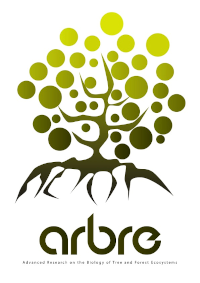Genomic and transcriptomic characterization of the Collimonas quorum sensing genes and regulon
Résumé
Abstract Collimonads are well-adapted to nutrient-poor environments. They are known to hydrolyse chitin, produce antifungal metabolites, weather minerals, and are effective biocontrol agents protecting plants from fungal diseases. The production of N-acyl homoserine lactones (AHLs) was suggested to be a conserved trait of collimonads, but little is known about the genes that underlie this production or the genes that are controlled by AHLs. To improve our understanding of the role of AHLs in the ecology of collimonads, we carried out transcriptomic analyses, combined with chemical and functional assays, on strain Collimonas pratensis PMB3(1). The main AHLs produced by this strain were identified as 3-hydroxy-hexa- and octa-noyl-homoserine lactone. Genome analysis permitted to identify putative genes coding for the autoinducer synthase (colI) and cognate transcriptional regulator (colR). The ability to produce AHLs was lost in ΔcolI and ΔcolR mutants. Functional assays revealed that the two mutants metabolized glucose, formate, oxalate, and leucine better than the wild-type (WT) strain. Transcriptome sequencing analyses revealed an up-regulation of different metabolic pathways and of motility in the QS-mutants compared to the WT strain. Overall, our results provide insights into the role of the AHL-dependent regulation system of Collimonas in environment colonization, metabolism readjustment, and microbial interactions.
| Origine | Fichiers éditeurs autorisés sur une archive ouverte |
|---|
